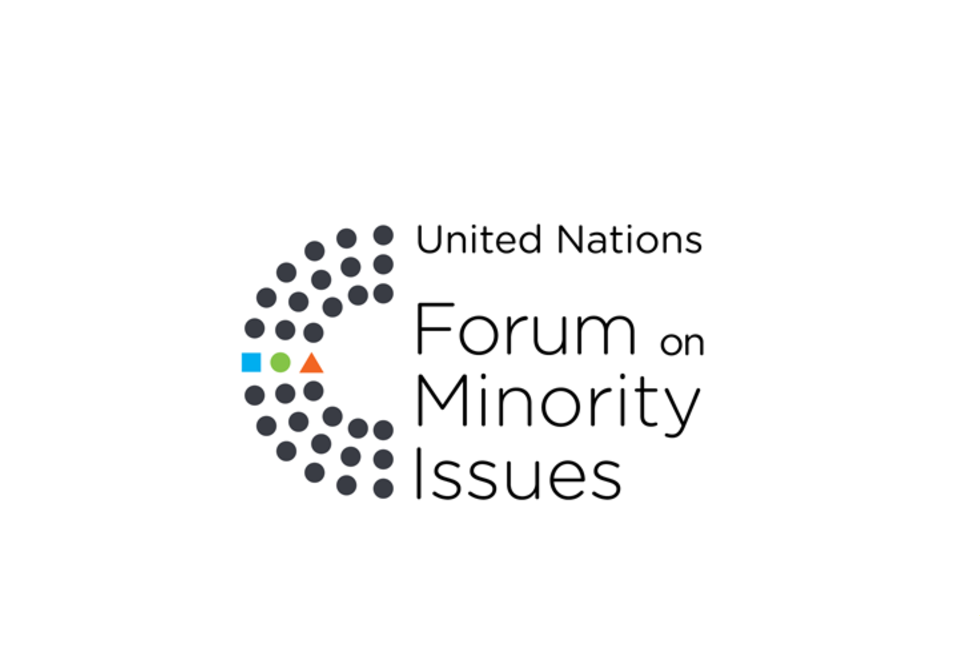
ENSZ Kisebbségi Fórum 2024
Genf


I am a Roma woman working in the Tom Lantos Institute as the Program manager of the Roma Rights and Citizenship Program. The Tom Lantos Institute is an international human and minority rights organization based in Budapest, Hungary. The institute focuses on Roma rights and citizenship, Jewish life and Hungarian and other national minorities. Combined with our educational activities, we see our research as a tool for social transformation that gives voice to disadvantaged and excluded minorities.
An integral part of European society for centuries, Roma are the largest ethnic minority group in Europe where they historically suffered from slavery, expulsion and genocide. Today, the discrimination of the Roma continues in the form of geographical and educational segregation, inadequate housing, labour market discrimination, poor health standards, racial hostility, cultural subordination, extreme poverty and exclusion from public and political affairs. According to the 2011 census, Roma amounted to 3.16% of Hungary’s population, making them the country’s largest minority group. However, other estimates put the number of Roma as high as 5-10% of Hungary’s total population. Deeply-rooted and widespread discrimination also permeates knowledge-production about the Roma in Europe, where for decades the vast majority of research on Roma was conducted without their input, and silenced or misrepresented key issues, memories and values of the Roma.
In accordance with Articles 2.2, 4.2 and 4.4 of the UNDM on the effective participation of minorites and on the promotion and protection of their culture, history, language, traditions, and religion, Tom Lantos Institute is committed to ensuring the participation of Roma in the generation of knowledge about their own history, culture, and other issues affecting them. This approach is mirrored in TLI’s Roma rights and citizenship program and in the innovative project I would like to present to you today. The „Roma representation in public spaces in Hungary” project was conceptualised and implemented by Roma and uniquely combines knowledge production, community identity-building and mobilisation of the Roma community. Relying on innovative research, the project maps representations of Roma people in public spaces and raises awareness among the Roma community about their importance, thereby encouraging them to create more representations of Roma. Roma are active participants throughout the project: as researchers, authors, project managers and evaluators, and as erectors of public monuments, which allow my community to shape our own public representations and develop knowledge production about Roma.
This project is the first to examine the state of Roma memory politics in public spaces in Hungary. Public space is a symbol of social integration. Despite Roma making significant contributions to Hungarian society, they are not properly represented in public spaces due to a lack of the necessary cultural, economic, and political capital. In an inclusive and just society, public space reflects diversity. By researching and mapping public representations, the project emphasizes the fact that many talented Hungarian writers, painters, actors, sportsmen, dancers and musicians were Roma. Moreover, it illustrates that members of the Roma community played a significant role in important historical events such as revolutions and wars of independence and have significantly contributed to the public, economic, and cultural life of the country.
TLI worked with four Roma experts in this project, who are influential figures in the Roma movement and research activities. They travelled across the country and mapped statues, plaques, murals, carved wooden grave posts, and public buildings named after or established by Roma individuals. Street names were not included in the research. A photo-illustrated publication was developed to present the research results. The publication was translated into Romani and English, to make the results more accessible to the international Roma community. A searchable online map and database were created to make representations more accessible in the online space.
The research identified 200 different public representations of Roma. At first glance, this may seem like a significant number, but it pales in comparison to the nearly 1,000 self-governing Roma bodies in Hungarian municipalities, who are in charge of the protection of cultural heritage. These representations are geographically distributed across the country. Their territorial distribution generally mirrors the proportion of Roma in the country, with a few exceptions. According to the findings, 61% of all monuments only represent two topics: Roma music or musicians that is emphasized by the non-Roma community and the Roma Holocaust that is overrepresented by Roma when erecting monuments. Some of these representations are located in areas not easily accessible to the general public.
I would like to conclude with an example which presents how we managed to encourage actors in Roma public life and local Roma communities to initiate new representations. In Nógrádmegyer, which is a small settlement in North-Hungary, a Roma organization erected a new plaque honouring the legacy of the local Roma, who founded a Roma blacksmith's cooperative in 1951. The cooperative gained national fame, while providing hundreds of Roma and non-Roma people with employment and community life. This case is an example whereby Roma successfully organised themselves, and provides an opportunity for oppressed people in the community to commemorate the blacksmith cooperative, which has been ignored by mainstream historical accounts.
The recommendation of the Tom Lantos Institute is to ensure the effective participation of persons belonging to minorities in research and knowledge production on issues affecting them.

